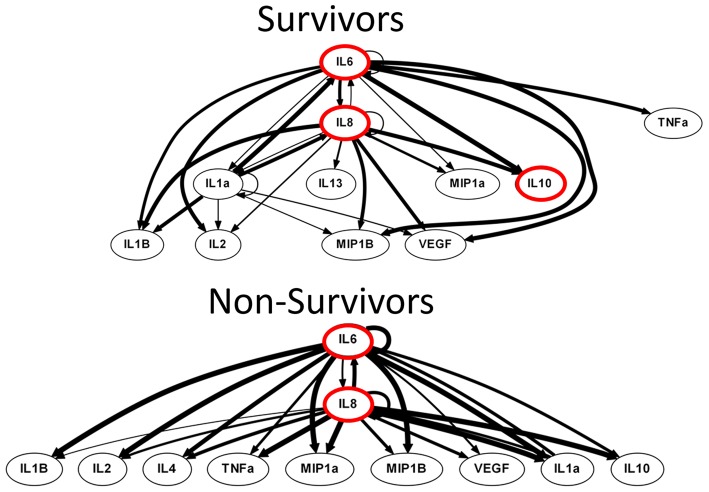Figure 4.
Non-survivors DyBN was characterized by a bimodal switch state, conferring a homogeneous inflammatory response. Both survivor and non-survivor inflammatory networks shared the IL-6 and IL- 8 as central nodes, an observation which is supported by elevated levels of both IL-6 and IL-8 in the CSF analysis. Importantly, a key difference was that the non-survivors system was characterized by a bimodal inflammatory switch state that confers an inevitable and homogeneous inflammatory response while the survivors had a tri-modal structure. The non-survivors network displayed all outputs shared between IL-6 and IL-8, irrespective of switch state. Such a network characteristic is congruent with a unimodal inflammatory phenotype, in this case a pathological type which ultimately leads to mortality. Notably, the survivors system contained the addition of a unique central node, IL-1α, which seemingly conferred a selective advantage for these patients. Thus, a DyBN inference showing an inflammatory network capable of mounting many diverse responses is a defining feature of survival.

